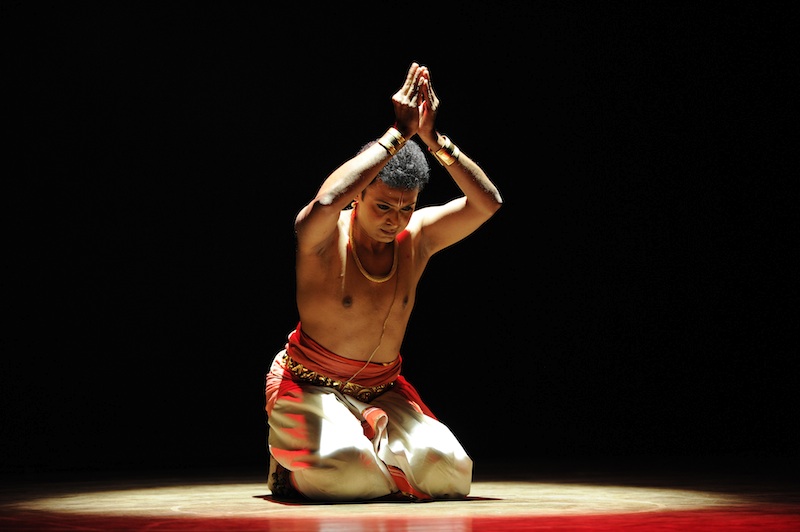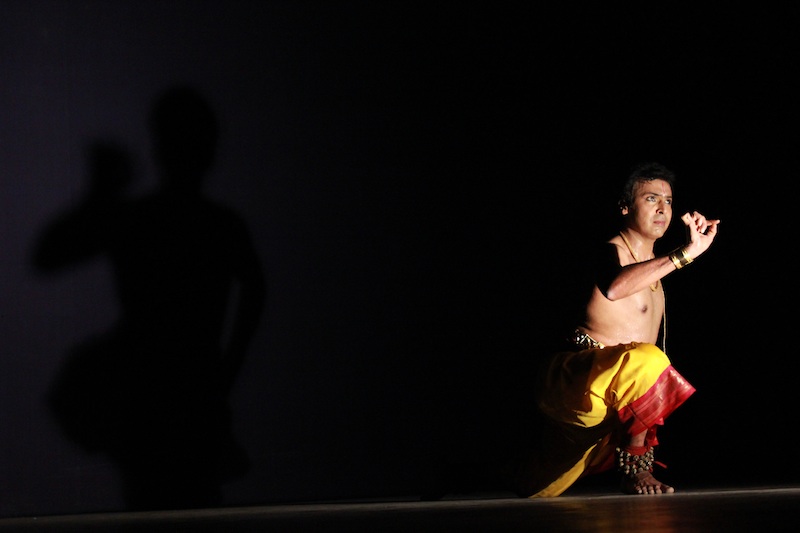When a male dancer performs a solo dance recital, the expectations are always sky high. Only the extremely talented and dedicated male artist would dare to make a career out of classical dance. Vaibhav Arekar is a rare talent who’s powerful Nritta combined with brilliant Abhinaya touches the soul of spectator.
He performed Nritya Chitra at the Chimaya Maruti Auditorium in Andover, MA on May 5. The presentation was made of two parts – a traditional Bharatanatyam presentation followed by a dance theater. He opened the traditional half with a Mallari in Gambhira Nattai set to Mishra Triputa talam. From the get-go, his powerful Nritta, excellent Talam and large movements filled the stage with great energy.
As he moved into Ardhanarishwara in Kumudapriya Ragam and Rupaka talam, he cast a spell on the audience with movements that moved very quickly between the male and the female form of the Lord. His Angik abhinaya did not falter and Shiva and Shakti were alive on stage at all times.
Local dancer Neha Parikh who is a student of Vaibhav Arekar presented a traditional Marathi composition, Rusali Radha where the poet describes a quarrel between the divine lovers, Radha and Krishna. Neha did a marvelous job with the piece.
Vaibhav Arekar then presented the humorous number Yedduku itinai in Suruti Ragam and Rupaka Talam. This was followed by another masterpiece, a Abhanga in Ragamalika and Adi Talam that describes the unity of Shiva and Vishnu. Neha brought the traditional half of the program to a conclusion with a Tillana in Ragam Revathi.
In the second half of the program , Vaibhav explored the motif of the beautiful, fragile and enigmatic relationship between a little boy and his mother through Tagore’s poem ‘Debotaar Grash from Sanchaiti. He further imaginatively integrated ‘Bir Purush/Hero’, ‘My Song’ and ‘The End’ from The Crescent Moon collection which is written from the perspective of either the child or the mother.
In ‘Debotaar Grash’, the mother decides to go on a pilgrimage leaving her child with her sister. But, the child is determined to go with her. Angered at the insistence, the mother curses the child that she will assign him to the sea if he persists. So, she goes ahead with her pilgrimage with the child. As the sea gets engulfed in a storm and there seems to be no way out, someone on the ship suggests that one of the travellers had promised an offering to the sea and unless that offering is made, no one would be spared. The mother gets pangs of guilt and horror as she remembers her words and is eventually forced by the fellow travelers to offer her son to the sea.
His presentation was absolutely amazing. He constantly kept in mind the fact that the story was a Bengali story and that the mother and the son were Bengali. Often Bharatanatyam dancers tend to cast all characters in the mold of Tamil people and for him to identify special features and characteristics of a Bengali family was absolutely brilliant.
Even the body movement was more of a Bengali mother. As he continued to explore the story he took the entire audience with him. In the end when the child’s soul gives his last message to the audience, there was not a dry eye in the audience.
As the audience left it was clear that they were much transformed by the presentation. His ability to experiment while not comprising on the traditional form helped move the art to new heights. We look forward to such brilliant presentations in the future from this amazing artist.



